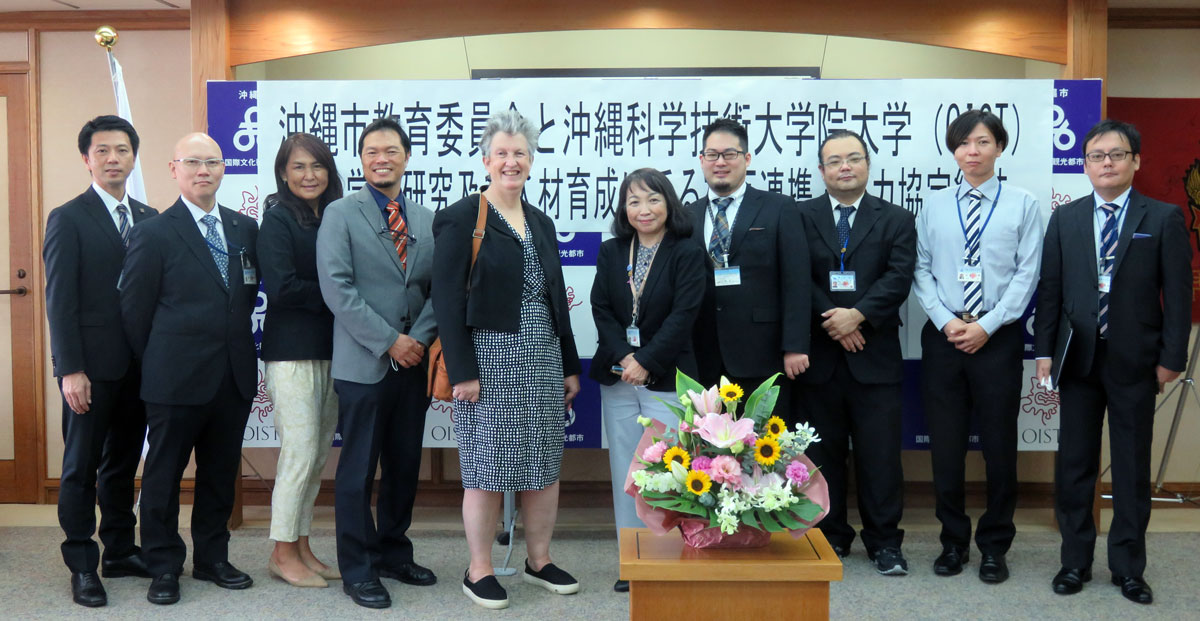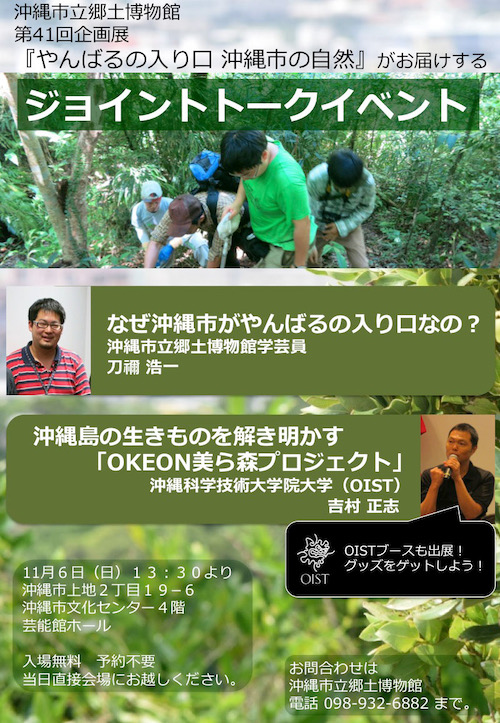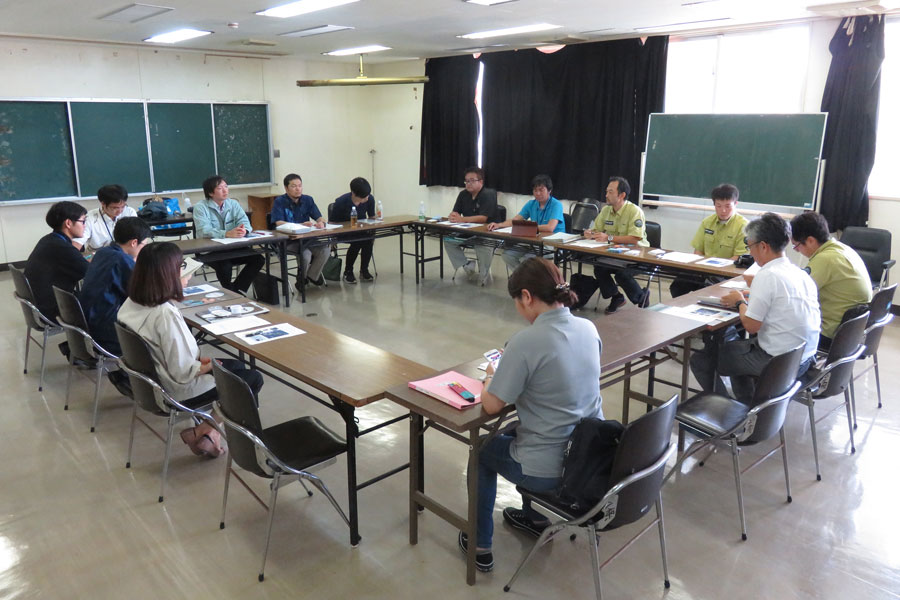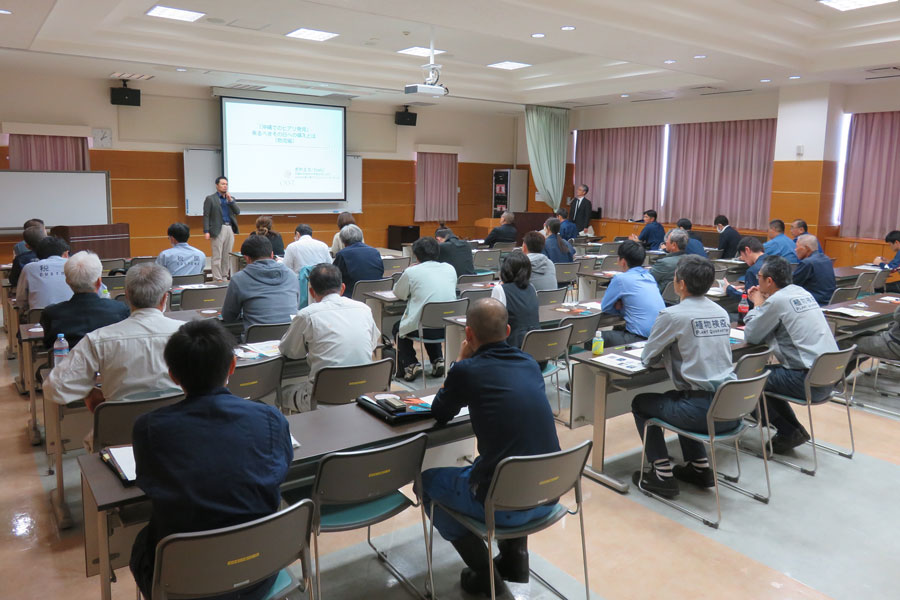Community Collaboration Project

At the OKEON Churamori Project, we are building a local community network across Okinawa and promoting regional cooperation. Our goal is to use our terrestrial environmental monitoring data, research findings, and human resources to contribute to the sustainability of natural resource use and society as a whole in Okinawa.
The connections the OKEON Churamori Project is making between the natural environment and local communities in Okinawa focus mainly on three areas: “school education,” “social education,” and “government.”
Collaboration in classroom education
1. Joint research with Okinawan high schools using the ant research package
The OKEON Churamori Project engages in joint research with high schools in Okinawa Prefecture using the “TUS ant survey package”, which survey ants by conducting repeatedly 15-minute collecting, developed for high school students engaging in exploratory research and club activities. Thanks to the hard work of the students and teachers who guide them, this research program has been producing solid results year after year. The ant study program has inspired some aspiring students to pursue environmental science further. Some have been successfully admitted to a university through the AO entrance examination, while others have moved on to university and continued their ant research. This demonstrates how the joint research program is cultivating the next generation of Okinawan scientists. Further, after the high school students finish their research, their samples are donated to the OKEON Churamori Project Collection and used for large-scale research projects such as the monitoring of fire ant infestations. This project is aiming to build the perfect win-win relationship of cooperation between educational and research institutions.
Achievements
Masashi Yoshimura, Takuma Yoshida, Masako Ogasawara, and Evan Economo (2016) Ant Research Program for High School Students Using the Time-unit Sampling Method. Research Bulletin of Environmental Education Center, Miyagi University of Education, 18: 43-47.
http://www.eec.miyakyo-u.ac.jp/blog/data/kiyou18/07.pdf
Achievements by high school students
- 39th Okinawa Youth Science Works Exhibition
Prize winner: Hentona High School “Ant Fauna of Hentona High School II” - 40th Okinawa Youth Science Works Exhibition
Prize winner: Hentona High School, “Ant Fauna of Hentona High School III”
Prize winner: Yomitanson High School, “Study on Ant Fauna and Diversity in Yomitanson: Possibility of Preventing the Spread of Fire Ants and Other Invasive Ant Species”
Prize winner: Koyo High School, “Study on Ant Distribution in Gushichan Beach” - 41st Okinawa Youth Science Works Exhibition
Prize winner: Koyo High School, “Study on Ant Habitat in Gushichan Beach II”
Collaboration in social education
1. Joint exhibitions with museums
Local museums are hubs of materials and knowledge about the surrounding area. They also play a role as an educational institution, spreading that knowledge to the public in an accessible way through exhibitions, outdoor workshops, etc. Working with local museums, the OKEON Churamori Project introduces new research findings on Okinawa's natural environment to the public through joint exhibitions and related lectures.
- Okinawa Municipal Museum Special Exhibition: “Traps”
- Okinawa Prefectural Museum and Art Museum Special Exhibition: “Eye-opening Biology Experiments”
- Okinawa Municipal Museum Special Exhibition: “Nature of Okinawa City - Entrance to Yambaru”
- Okinawa Municipal Museum Special Exhibition: “Exploring Nature through Sound—Okinawa’s Soundscape”
- Yambaru Wildlife Conservation Center Ufugi Nature Museum Special Exhibition: “Biodiversity through Ants in Okinawa”

Collaboration with government
1. Providing expert advice to committees
In order to help solve local issues, the OKEON Churamori Project uses its research experience, research findings, and the many lessons learned through networking with local communities to make proposals as members of administrative and educational committees in Okinawa Prefecture.

2. Solving local problems via monitoring networks and expertise
The OKEON Churamori Project’s research experts, monitoring system, and collaborative social networks provide the data, knowledge, and technology that are needed to develop government policies aimed at sustainable conservation and use of our precious biodiversity. In particular, we have made great developments in fire ant monitoring through our surveillance network and community maintenance in Okinawa Prefecture through the prefecture’s Invasive Ant Countermeasure Project and by applying the know-how gained through the project to control browsing ants (with funding from the Ministry of the Environment's Environment Research and Technology Development Fund).
We also provided information on the distribution of the Ryukyu wild boar following the 2020 outbreak of classical swine fever (CSF) in Okinawa, and used audio data analysis to help conserve rare species. These are just some of the ways the OKEON Churamori Project contributes to the Sustainable Development Goals (SDGs) of Okinawa as it leverages the mountain of highly specialized research results it has accumulated to solve real-world problems that go far beyond the small scope of ant research.





